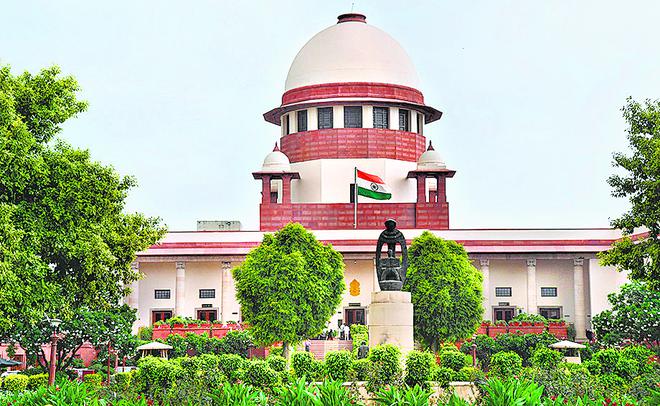CJI to discuss: On Monday, April 25, 2022, CJI N.V. Ramana said he would discuss the petitions challenging the abrogation of Article 370 to strip the people of Jammu and Kashmir of their special privileges, which led to the state’s bifurcation, with other judges and consider listing them after the summer vacations.
“Let’s see what happens after the vacations… There are five judges on the bench in this case… P. Chidambaram, Kapil Sibal, and Shekhar Naphade were among the senior advocates who heard the CJI address a group of senior advocates.
CJI will step down on August 26
The court will reopen on July 11 after the summer vacation begins on May 23. On August 26, CJI Ramana will step down. In an oral argument before the CJI, the senior lawyers stated that the Article 370 case had been pending in the Supreme Court for more than two years, despite the fact that a separate challenge had been filed against the Centre’s decision to appoint a Delimitation Commission to redraw Lok Sabha and Assembly constituencies in the Union Territory of Jammu and Kashmir.
Mr. Chidambaram urged, “Let the case be listed immediately after the vacations.”
The case had not been heard since a five-judge bench led by Justice (as he was then, now CJI) Ramana refused to refer the petitions to a larger Bench in a March 2020 order. Justice R. Subhash Reddy, one of the judges on that bench, has since retired.
The petitions were filed in response to a Presidential Order dated August 5, 2019, that weakened Article 370. In accordance with the Instrument of Accession, the Article had granted special rights and privileges to the people of Jammu and Kashmir since 1954. By incorporating Article 35A into the Constitution, Jammu and Kashmir were granted special status. On the advice of the Jawaharlal Nehru Cabinet, President Rajendra Prasad signed an order incorporating Article 35A in 1954. When the President incorporated Article 35A into the Constitution through a Presidential Order issued under Article 370, the Parliament was not consulted.
The Jammu and Kashmir (Reorganisation) Act of 2019 took effect after the abrogation, bifurcating the state of Jammu and Kashmir into two Union Territories of Jammu and Kashmir and Ladakh. Jammu and Kashmir had lost their full statehood and had become a Union Territory of the federal government in a matter of hours. A state of lockdown in the Valley had preceded the move.
Centre’s “unilateral” decision
Several petitions, including those filed by advocate M.L. Sharma and the National Conference (NC), have questioned the Centre’s “unilateral” decision to impose a curfew and dismantle India’s unique federal structure by dividing Jammu and Kashmir “without the consent of the people.”
They have questioned the Centre’s sudden decision to “unilaterally unravel the unique federal scheme, while undermining crucial elements of due process and the rule of law, under the guise of President’s Rule.”
The August 5 Order and the Jammu and Kashmir Reorganisation Act of 2019 were arbitrary, according to a separate petition signed by detained politician Shah Faesal and Shehla Rashid Shora, among others. They also contested the state’s proclamation of President’s Rule in December 2018.
What happened in Jammu and Kashmir, according to the petitions, “goes to the heart of Indian federalism.” “A pluralistic federal model is best for national integration. One size does not always have to fit all in this model “According to the NC’s petition.
According to the petitions, the Presidential Order of August 5 replaced the Governor of the State Government’s concurrence in changing the very character of a federal unit.
They claimed that the Presidential Order used the guise of a temporary situation, intended to hold the field until the elected government returned, to achieve a fundamental, permanent, and irreversible change in the status of the State of Jammu and Kashmir without the consent, consultation, or recommendation of the people of the State acting through their elected representatives.
They claim that the Order of August 5 used Article 370 to demolish Article 370. It amounted to the abolition of the democratic rights and freedoms that had been guaranteed to the people of Jammu and Kashmir upon their accession.
Article 370’s main goal was to make it easier to extend constitutional provisions to the state in a gradual and orderly manner, based on needs and requirements, without dismantling the State Constitution.
The August 5 Order assumed that the legislative assembly of the State of Jammu and Kashmir had a power that its own Constitution, under Article 147, denied by replacing the recommendation of the ‘Constituent Assembly’ with that of the ‘Legislative Assembly’ in order to change the terms of Article 370. As a result, the petitions claim that the August 5 Order was ineffective.
The government has responded by claiming that the Presidential Order of August 5 is now a “fait accompli.” During the hearing of petitions challenging the August 5 order and the subsequent reorganization of the State of Jammu and Kashmir into two Union Territories, the government urged the court to reject any “separatist” arguments.

